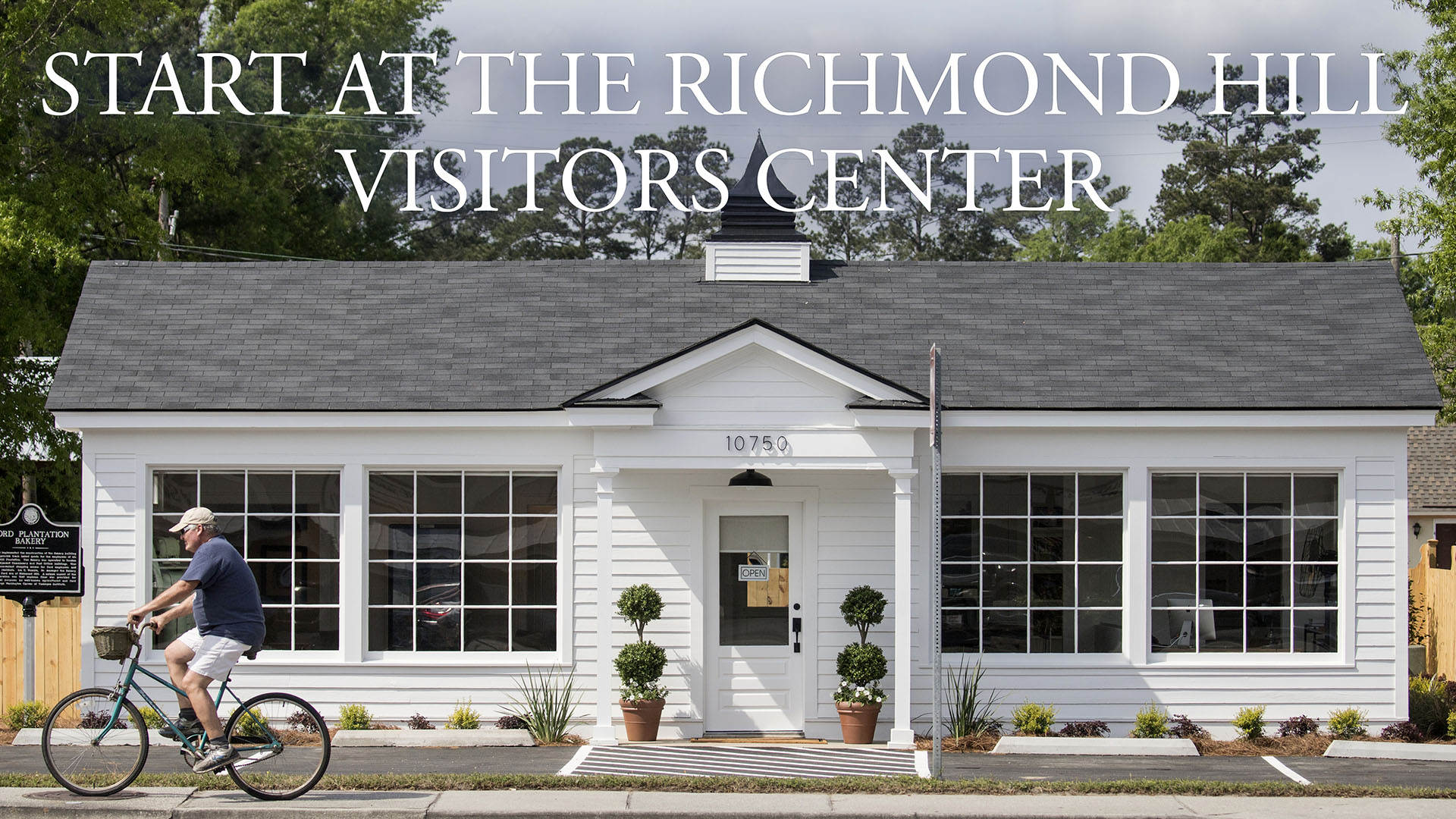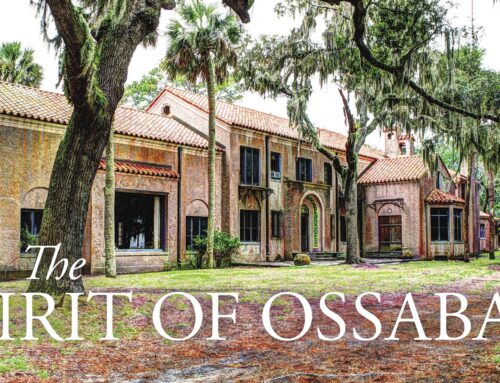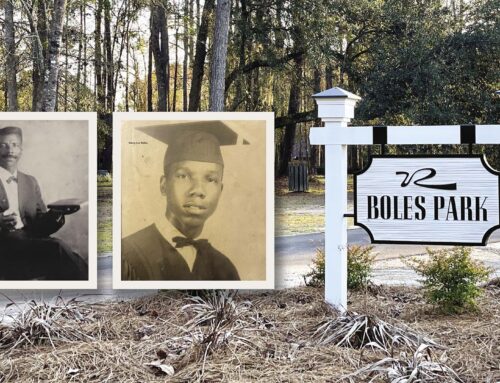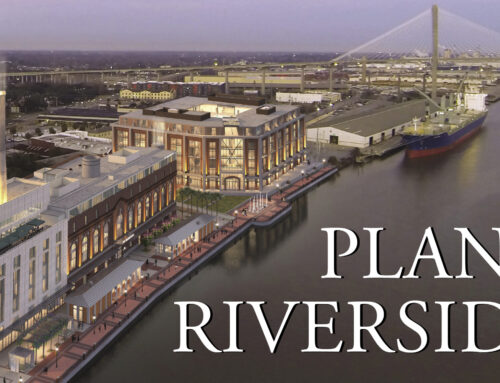The Richmond Hill Visitor’s Center, formerly The Ford Bakery
If you’re familiar with our lineage, you know Richmond hill wasn’t always called Richmond Hill. Until May of 1941, we were Ways Station, named after William J. Way, the first station master and local rice planter of property through which the Savannah, Albany, & Gulf Railroad passed. And while “Ways Station” gave way to Henry Ford’s Richmond Hill, this pretty little stretch of Coastal Georgia will always be a way station—a stopping place on one’s journey.
Our town stopped Ford on his journey to Cuba as he sailed down the Ogeechee and, despite the unrelenting hold of economic upheaval, it looked a lot like home. He would eventually own upwards of 85,000 acres and, with his newfound residency, he restored Ways Station. Now, more than eight decades later, Richmond Hill repaid the favor by restoring a piece of Ford’s history critical to our namesake.
On April 6th, 2019, the old Ford bakery began serving its new purpose as the Richmond Hill Vsitors Venter. “I knew that if we were going to put ourselves on the map, we needed a true visitor’s center,” said Christy Sherman, Director of the Richmond Hill Convention and Visitors Bureau, who spearheaded the project. “Our own space where we can really showcase Richmond Hill—where to eat, where to stay, where to play.” When the bakery came up for sale, Christy knew it was the perfect representation of our town’s character.
Ford’s bakery, also known as the Richmond Hill Plantation Bakery, was constructed in 1941 and worked in tandem with the adjacent Commissary and Post Office buildings. Local baker, Ira S. Womble Sr., was hired to operate it. After Ford’s death, Womble went on to start the Georgia Fruitcake Company in Claxton, Georgia, leaving the building to be used for an assortment of private businesses until, finally, landing in the hands of the City of Richmond Hill in 2016 for the purpose of opening a Visitors Center.
The building was in poor condition; it showed its age through hidden leaks and termite damage. It would be a costly, lengthy endeavor to rebuild. Even so, Christy was assured it was worth it. “Before purchasing the building, we relied on the advice of historic preservationists,” she said. “We knew that, even though it is a small building, it has a big story. If we lost it, the entire Ford-era district would be diminished.”
After purchasing, the next step was to recruit Savannah architect, Jerry Lominack of Lominack Kolman Smith Architects (LKSA). Jerry has worked as a preservationist for over 50 years, and his firm has received design awards from Historic Savannah Foundation and the American Institute of Architects, to name a few. “We started with a structural investigation of the building,” Jerry said. “We distinguished the areas that were salvageable from those that weren’t. Some walls had to be completely torn down and rebuilt. There were renovations that had been made [like aluminum siding placed over wood siding] that were about to take [the bakery’s] life. The question was: how do we successfully rebuild around all the damaged parts?” The answer to that question arrived with Greg Jacobs, co-founder of Landmark Preservation, who took the cautious steps necessary to get to the root of the structure.
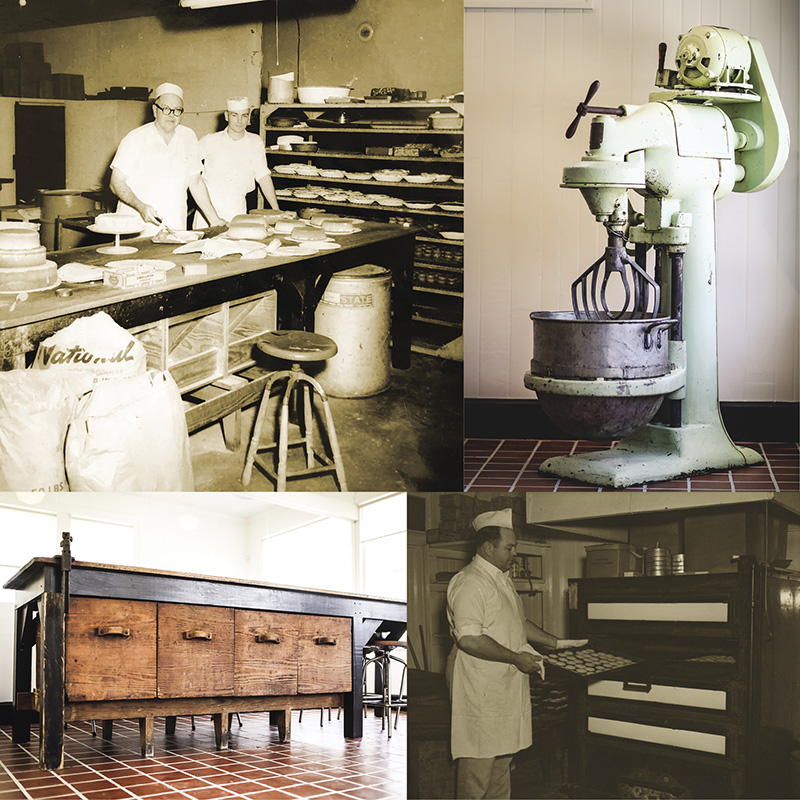
“The trick with this project was needing to make sure the building was structurally sound again while trying to maintain as much of the original interior as possible,” Greg said. “It certainly would have been faster to tear everything down and put it back together, but we were really cognizant of what historic fabric was left and made every effort to maintain it.”
While Jerry and Greg worked on the exterior, Christy took some time to research the interior. Books and oral histories of Ford-era citizens are available at the Richmond Hill History Museum, but to get usable information on the bakery itself, Christy had to travel to the Benson Ford Research Center in Dearborn, Michigan, where she sorted through files in the hopes of finding something helpful. Greg says that this type of meticulous restoration relied on the physical evidence and documentative research gathered; Christy found photos that were critical in confirming the changes being made were the right ones.
“A lot of the little details on the outside were covered by siding or eaten by termites,” Greg said. “But [we were able to recreate] front stoop columns and the water table by looking at those old photographs. They helped us build the detail back.”
The restoration was a success and now, not only is the new visitor’s center taking pride in its past–displaying the original mixer and work table Ford bought back in the ‘40s—it is embracing the present with touchscreen kiosks highlighting local businesses, attractions, and natural resources that visitors can visit in town. All while sharing a gallery space with Art on the Coast, a local non-profit working to promote art and culture in Coastal Georgia.
NOTE: Look for signs around town with the slogan, “This Place Matters.” This campaign has become a leading example and visual cue for preserving the historical structures in Richmond Hill.

